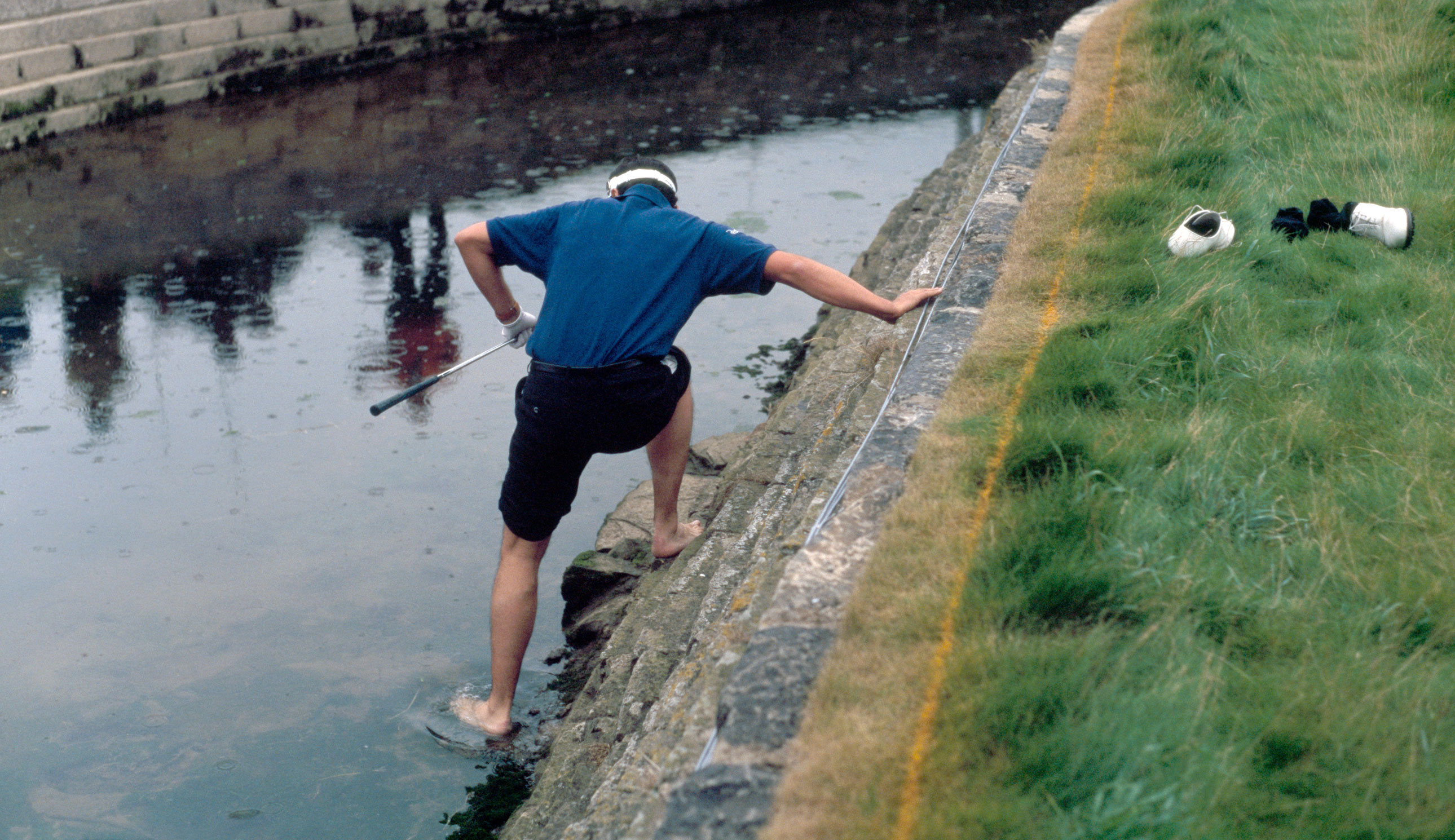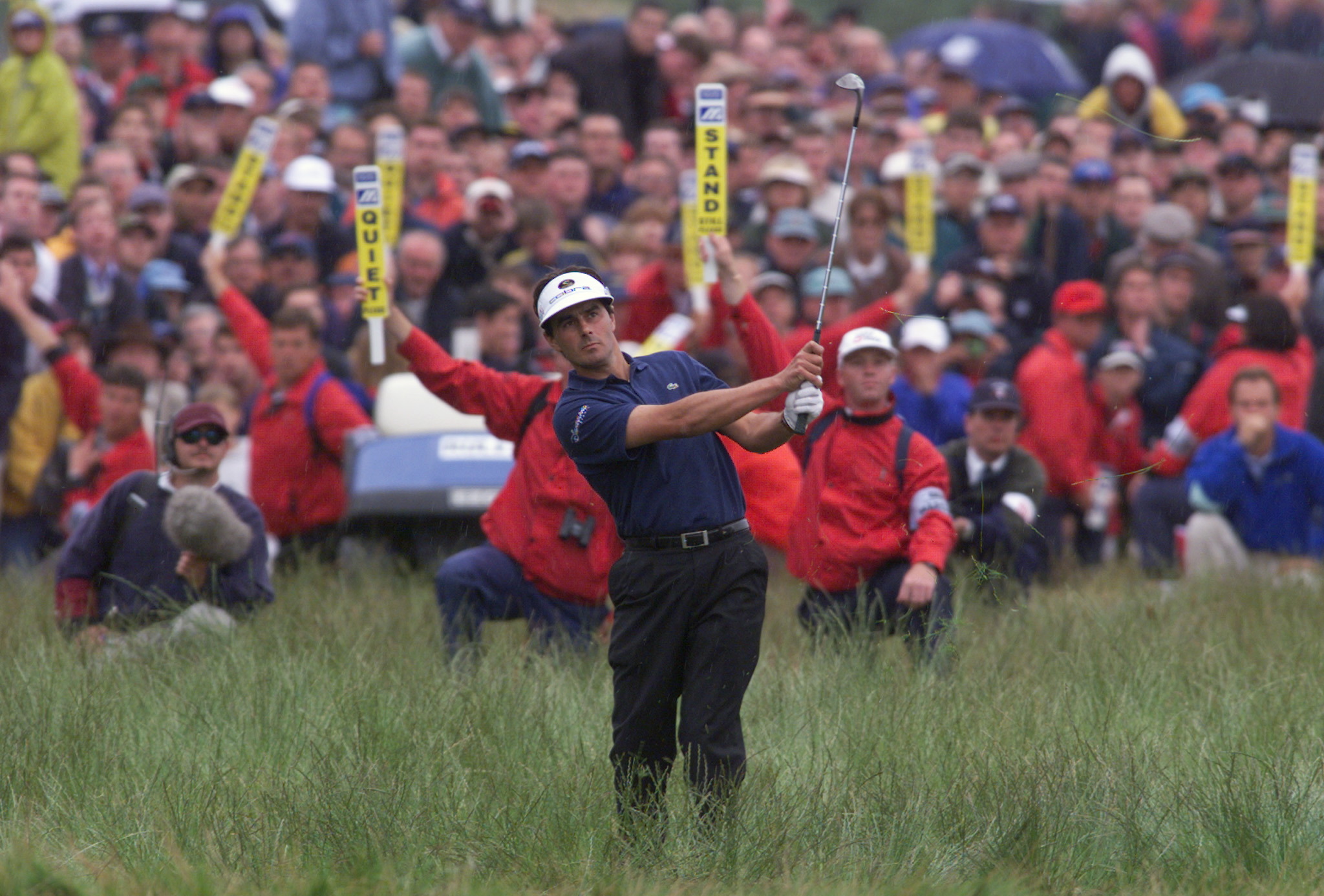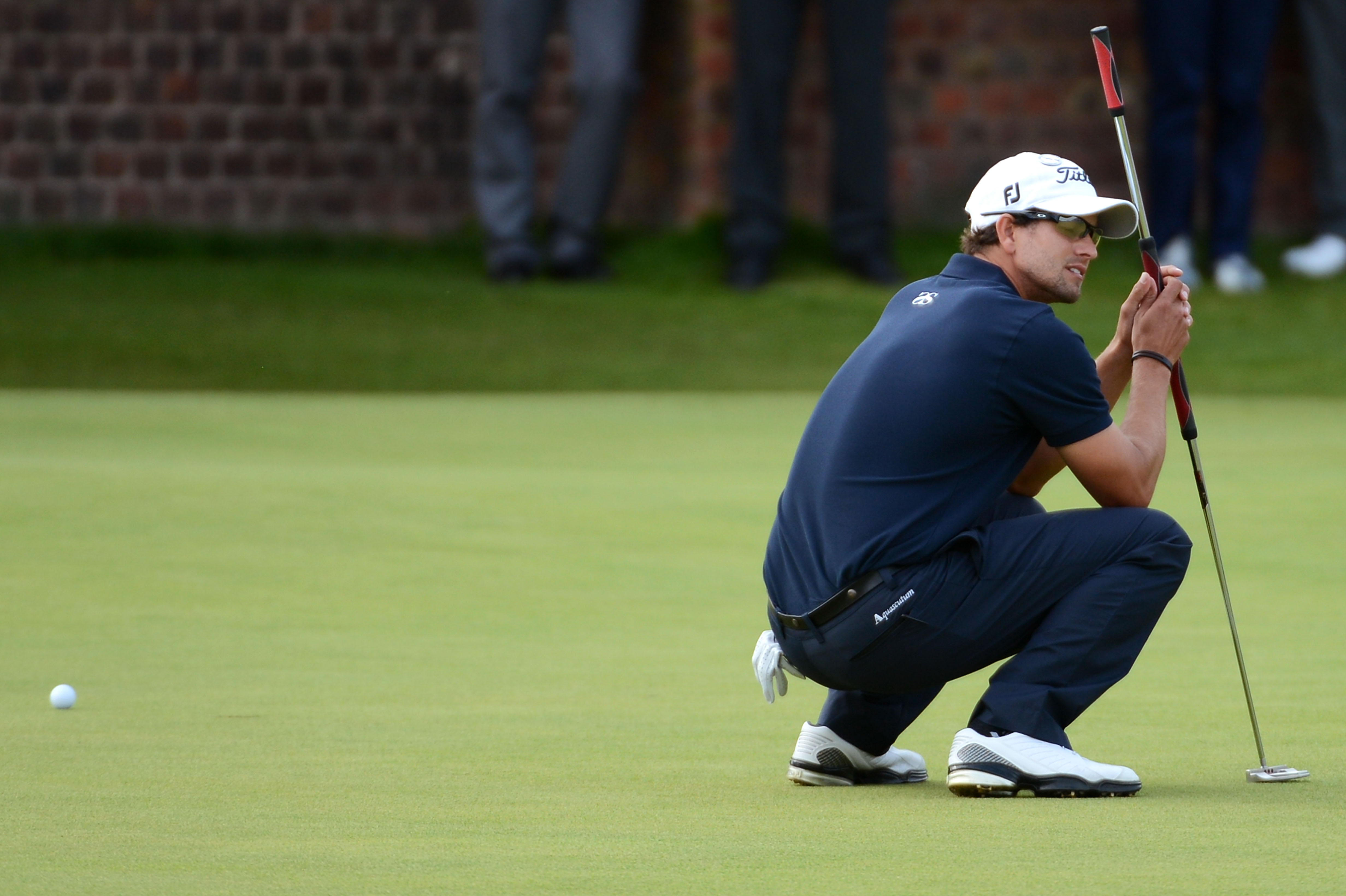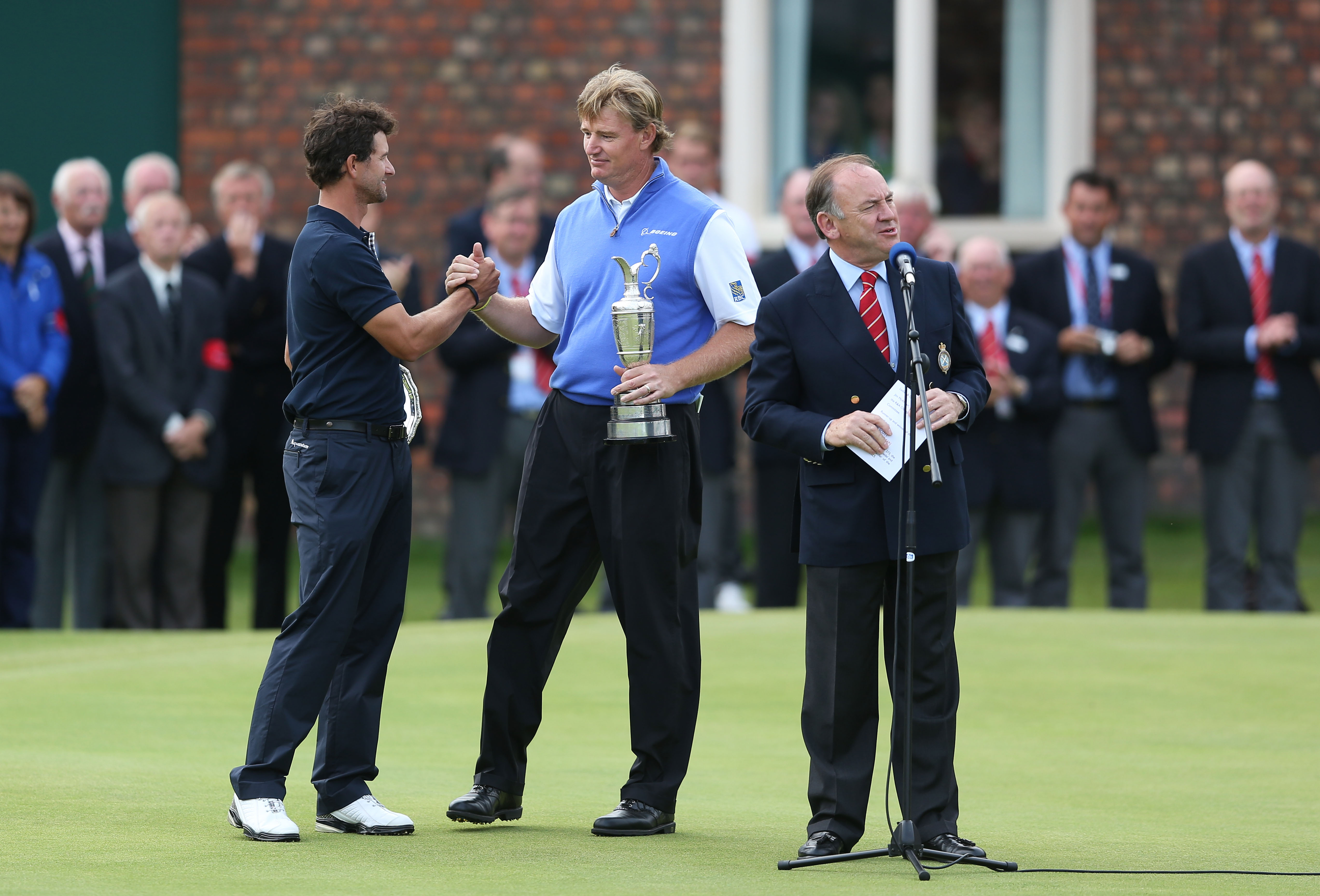The Five Worst Golf Chokes At The Open Championship
Here we take a look at five of the worst chokes seen at the historic event


The Open Championship is one of the most historic tournaments in sport, with the event founded in 1860. Originally, it was held annually at Prestwick Golf Club in Scotland, before being staged at some of the best golf courses the British Isles has to offer.
Not only does it bring the world's best together, but The Open has also created some of the most memorable moments in golf. Some are positive but a lot of them involve players trying to hold on coming down the stretch, something which, understandably, is hard to do. So, bearing this in mind, we have taken a look at the five worst Open chokes...
Jean Van de Velde, Carnoustie, 1999

Standing on the final tee, journeyman French golfer, Jean van de Velde, led The Open Championship of 1999 by three shots. What followed was the worst Open golf choke ever. “Here was a man who had a golf tournament won,” reflected Jack Nicklaus “and mentally and strategically played a hole so badly that it cost him the golf tournament.”
Van de Velde had won only once before on Tour - Roma Masters in 1993. This was one of the less prestigious events on Tour, with below-average prize money not drawing the best players and, consequently, it survived only two years as a European Tour event.
On the 487-yard par 4 of the 1999 Open at Carnoustie, Van de Velde took out his driver. Two of the three previous times he played this hole, he had made birdie; the other time it was par. Now, even a double bogey would see him home.
A wayward drive went over the burn on the right of the fairway, but found land. Rather than chip back on to the fairway and play to the green with his third shot, he went for the green with his 2-iron. This shot hit the greenside grandstand which, in itself would not normally have been a problem, as he would be given a free drop. However, the ball hit a rail on the grandstand and ricocheted back from it. That was bad break number one.

From there, the ball rebounded onto the stone wall of the Barry Burn and then bounced up and 50 yards backwards into knee-deep rough - bad break number two. With a third shot hacked out of the rough, he dumped the ball into the Barry Burn and, in comical fashion, Van de Velde followed the ball, having taken off his shoes and socks, before rolling up his trousers as he contemplated playing out of the water.
Subscribe to the Golf Monthly newsletter to stay up to date with all the latest tour news, equipment news, reviews, head-to-heads and buyer’s guides from our team of experienced experts.
Sense soon prevailed and he took a drop. Now he needed to get up and down to win. His fifth shot went into a greenside bunker and, as he splashed out to six-feet, he managed to hole the putt to at least salvage something in that this left him in a three-way play-off. He ended up losing this to Paul Lawrie.
For a television advert for a putter, Van de Velde returned to Carnoustie that winter to replay the hole using only this putter to see if he could do it in the six shots he had needed. He did so at the third attempt.
Adam Scott, Royal Lytham & St. Annes, 2012

Australian Adam Scott had led at Royal Lytham & St. Annes in The 141st Open from the end of the first round until, well, virtually the very end. Standing on the 15th tee for the last time, in the final pairing, he was four shots clear, but he bogeyed these final four holes to let Ernie Els in to win his fourth Major.
At one stage on that final day, Els had been seven shots behind Scott, but the South African stormed through the back-nine in four-under-par. At the time, Scott was standing at 10-under par, one over for his round after 14 holes on Sunday, but he missed putts for par on 15 and 16. The one on 16 was from five-feet.
"The putt on 16 was huge for him to miss that," said Graeme McDowell, who was playing with Scott. As Scott was walking to his drive on the 17th, he heard a roar from the 18th; Els had just made birdie to finish on seven-under.

Striking his approach, Scott sent his 6-iron from 176 yards into the rough where it nestled down. "He hit a great drive down the middle of 17, and had half of England right of that pin, and he missed it left," recalled McDowell.
"I turned it over into the 17th," Scott said. "It wasn't a good shot." As Els admitted later, he was now hoping that he might make a play-off, just so long as Scott did not match Els’ birdie on the last. If Scott made par, Els and he would go to extra holes.
Scott hit his drive on 18 into a pot bunker. He chipped out and hit his approach to the par 4 to 12ft. He now needed to sink that 12ft putt to force a play-off with Els. He missed it left.
"I'm very disappointed, but I played so beautifully for most of the week I really shouldn't let this bring me down," said Scott in his post-round interview. "I know I've let a really great chance slip through my fingers today, but somehow I'll look back and take the positives from it. I am just numb at the moment."
Thomas Bjorn, Royal St George’s, 2003

When seeking putative Open chokes in the making at Royal St George’s in 2003, it would have been hard to know just where to look. It seemed to be that everyone who was getting close to winning had second thoughts about it.
Prime contender for one of the worst Open chokes would have been Ben Curtis. The 750-1 longshot had shot six-under in the first 11 holes on the final day, but then dropped four strokes in the next six. However, by sinking a 12ft putt for par on the final hole, he had at least made himself the clubhouse leader.
That hoover-up of Major titles, Tiger Woods, was hunting down another one before he dropped shots at the 15th and 17th to finish two shots off the title. Vijay Singh came up one shot short having also dropped shots down the stretch, but the man who suffered one of the biggest Open chokes was Thomas Bjorn.

Bjorn had a three-shot lead with four holes to play. On the 15th though, his tee shot rolled into a pot bunker, from which he was forced to chip out sideways. A bogey was the eventual result. He again found a bunker from the tee on the par-3 16th, when the ball rolled off the green. Escaping from the sand, the ball landed on the green - and rolled back into the bunker. He tried again, and the result was identical.
Minutes later he was walking off with a five on his scorecard and was now only joint leader for The Open with clubhouse leader Curtis. On the 17th, he drove into the rough, and his approach fell short of the green. His chip went beyond the flag leaving him a 6ft putt for par. He missed it.
“When he got that bogey, I knew we had won,'' said Curtis' caddie, Andrew Sutton. Bjorn now had to birdie the final hole to force a play-off. Only one man had birdied that final hole all day and, when Bjorn made par on 18, it meant he had lost out on becoming the Champion Golfer of the Year by one stroke.
That 17th hole had been the undoing of Bjorn in more ways than one. Earlier in the tournament, in his frustration at his failure to escape the bunker, he slammed his wedge down in disgust thus incurring two penalty strokes for grounding his club. Two year years later, Bjorn stood on the 17th tee at K Club jointly leading the European Open. He took 11 on the hole and finished in 33rd position.
Leo Diegel, Royal Liverpool, 1930
Leo Diegel began caddying aged 10 and, seven years later, in 1916, won the Michigan Open. In 1920, he played in his first US Open and finished runner up, with Diegel securing two Majors in a career that was cut short by a shoulder injury.
Both of these were in matchplay tournaments - the 1928 and 1929 USPGA Championship, with Diegel finishing in the top-10 eight times at the US Open or The Open, the only two strokeplay Majors during most of his career.
Leo Diegel was an excellent striker of the ball, but he could struggle on the green. After some experimenting, he developed a way of putting which dampened his chance of calamity. He used an extra-long putter, a forerunner of the belly putter, which he pressed to his waist during the stroke. When he putted, he crouched over the ball, with his elbows jutting out so that his forearms pointed in a straight line parallel to the target.
His style caused much comment, but it had a lot to recommend it. He crouched so low that he looked straight down on the ball and a twist of head meant he looked straight down the target line. When the stroke was played with a pendulum motion, it is hard to twist the putter face out of perpendicular during the stroke.
Diegel’s Open golf choke came in the 1930 tournament. On the final green he had a tiddler to knock in for par and a share of the lead. Bernard Darwin described what happened as: “Finally he laid his putt apparently stone-dead in three at the ‘Home’ hole and missed the putt by the widest possible margin”.
Later, the notion took hold that Diegel had missed the ball altogether, that an attack of the yips caused him to whiff the ball; that is, play an air shot. These days there would be definite proof by way of television pictures, but then, there was just eye-witness accounts, reportage and anecdote.
In Golf Between Two Wars, Darwin said that Leo had utterly failed to hit it, which was interpreted that Diegel had actually missed the ball, a horrendous case of the yips if so. But, of course it could just mean that Diegel had not committed to the shot, and badly mis- or under-hit it.
Air shots at The Open are not unknowns, Hale Irwin missed a tap in from three inches in The 1983 Open. This cannot be classified as a Open Golf choke for our list, however, as it was in the second round, and a result of carelessness. Why Irwin’s is so well remembered, is that it cost him his chance of the title as he finished one shot behind winner Tom Watson. Had he made that 3-inch tap-in two days earlier, he would have been in a play-off with Watson.
Doug Sanders, St Andrews, 1970

Having saved par from the bunker on the Road Hole, Doug Sanders stood on the 18th tee of the 1970 Open holding a one-shot lead. His drive from the tee was long and took him to within 75 yards of the green.
He knew the distance to the green as he had paced it out before playing his approach shot, but this shot was over-hit, coming to rest at the back of the green and leaving him a downhill putt.
This putt came up three-feet short, with the resulting putt meaning that, if it dropped it would win The Open. He took a long time reading the putt, and then settled down to play the shot. At address, he then he stopped to flick a bit of debris off the line.
The watching Ben Hogan said under his breath: "Back away, back away," but, rather than walk away and re-start his pre-shot routine, Sanders played and pushed it right. "I never got set," Sanders admitted afterwards.
This took him into an 18-hole play-off with Jack Nicklaus, who went on to win the seventh of his 18 Majors. Sanders’ choke meant he settled for his fourth runner-up finish in a Major, and the second time at The Open.
Sanders was born into a poor family, picked cotton as a youth and was self-taught as a golfer. "If I had made that putt, all the endorsements, the clothing lines, the golf-course designs," Sanders reflected later in life on his Open golf choke. "It's like buying a lottery ticket worth $200 million and then dropping it in the can and watching the numbers wash away. I felt like I cheated myself. But measure my worth in friendships and I'm rich. This game has given me the opportunity to play golf with presidents and kings."
In 2000, on the 30th anniversary of his Open Golf choke, Sanders told an interviewer: “It doesn't hurt much anymore. These days I can go a full five minutes without thinking about it.”
Contributing Writer Roderick is the author of the critically acclaimed comic golf novel, Summer At Tangents. Golf courses and travel are Roderick’s particular interests. He writes travel articles and general features for the magazine, travel supplement and website. He also compiles the magazine's crossword. He is a member of Trevose Golf & Country Club and has played golf in around two dozen countries. Cricket is his other main sporting love. He is also the author of five non-fiction books, four of which are still in print: The Novel Life of PG Wodehouse; The Don: Beyond Boundaries; Wally Hammond: Gentleman & Player and England’s Greatest Post-War All Rounder.
